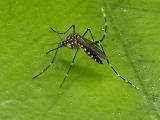The World Health Organization (WHO) announced an updated yellow fever response plan yesterday, detailing vaccine-related and other strategies toward combatting outbreaks in Angola, Democratic Republic of the Congo (DRC), and Uganda in an effort to prevent global spread of the disease.
The yellow fever outbreak began 6 months ago in Angola, where 3,137 suspected cases have been reported as of Jun 15, according to the WHO plan. DRC has reported 1,044 suspected cases, and Uganda has seen 68 suspected cases of the mosquito-borne disease. Kenya reported 2 confirmed cases, and China has 11 confirmed cases imported from Angola by unvaccinated travelers, the WHO said. Two days ago local officials reported 1,000 DRC cases.
The WHO's framework has four objectives, which will require an estimated $72.35 million from the WHO and its partners:
- End current outbreaks through vaccination programs
- Prevent morbidity and reduce mortality through early detection and case management
- Prevent international spread of the disease
- Prioritize yellow fever vaccine research to improve access
The WHO will work with partners to meet those objectives in outbreak countries, nations that border the outbreak or where yellow fever is endemic, and other countries at risk because of international travel and trade and the presence Aedes mosquitoes.
Focus on vaccination, Kinshasa
The WHO framework suggests $60 million to fund a mass vaccination campaign effort to meet the first objective. The vaccination campaign will begin in July and focus on a 75- to 100-kilometer belt spanning the border between Angola and DRC.
There will also be an urban campaign targeting the 12 million inhabitants of Kinshasa, DRC. Yellow fever spreads rapidly through urban areas, and WHO experts have worried about a Kinshasa outbreak since January, when the outbreak began in Luanda, Angola.
Details of the vaccination campaign come a week after the WHO announced it would begin fractional dosing of the yellow fever vaccine to stretch supplies. The reduced dose is one fifth the strength of the standard vaccine and may prevent infection for only 1 year. The standard dose provides lifelong protection against the disease among 90% of recipients after 10 days and 99% protection after 90 days.
Prevention through vaccination remains the best way to curb the global spread of yellow fever, but increased efforts in disease surveillance and case management can reduce morbidity and mortality in many cases, the WHO said.
There is no specific treatment plan for yellow fever; only supportive therapies to treat fever, bleeding, and other complications from the disease. The WHO says that $5.2 million is needed to strengthen case management and surveillance in Angola, DRC, and Uganda. Kinshasa is the priority of disease surveillance programs, according to the WHO's framework.
Increased reporting
The WHO also announced a new coordination database that will collect partner information in a central location.
"The reporting tool makes information on the global response more accessible and transparent," the agency said on its website. "All those involved in the response to yellow fever are requested to update their activity information on a continuous basis, in order to ensure the reports are accurate."
In addition to the database, the WHO detailed plans for an online dashboard that will track partner activities, donor contributions, and gaps in funding.
See also:
Jun 22 WHO yellow fever global response plan
Jun 17 CIDRAP News story on fractional dosing





















